 November 18, 2021 John E. Ross, KD8IDJ, Editor
| ||||||
ARRL Headquarters will be closed on Thursday, November 25, and Friday, November 26, for the Thanksgiving holiday. The ARRL Letter will not be published on Thursday, November 25, and ARRL Audio News will not be produced on Friday, November 26. There will be no W1AW bulletin and code practice transmissions on either day. ARRL Headquarters will reopen on Monday, November 29 at 8 AM EST. ARRL wishes you a safe and enjoyable holiday. Registration Opens for the 2022 ARRL National Convention in Orlando ARRL and the Orlando Amateur Radio Club (OARC) will host the 2022 ARRL National Convention and Orlando HamCation® on February 10 - 13, 2022, in Orlando, Florida. The convention theme, "reDiscover Radio," highlights radio amateurs' commitment to developing knowledge and skills in radio technology and radio communication. Convention co-organizer and ARRL Director of Public Relations and
Innovation Bob Inderbitzen, NQ1R, promises the ARRL National Convention at Orlando HamCation will be one of the best in-person conventions that ARRL has ever assembled. "There will be expert presenters, community-building opportunities, and plenty of social time to celebrate being together with our friends from across the ham radio community," Inderbitzen said. "And who doesn't love Florida in February?" The convention will kick off on Thursday, February 10, with a series of morning and afternoon Training Tracks and a National Convention Luncheon at the DoubleTree by Hilton Hotel Orlando at SeaWorld. Registration is now open for Thursday's program, and an early-bird registration rate of $75 is in effect through December 15. The National Convention Training Tracks are workshops providing an in-depth learning experience in one of the four track topics. Attendees will select a Training Track when completing their online National Convention registration.
Registration includes the National Convention Luncheon, featuring a keynote address by ARRL CEO David Minster, NA2AA.
The rest of the celebration continues at HamCation on Friday, Saturday, and Sunday (February 11 - 13) at Central Florida Fairgrounds and Expo Park in Orlando -- an 87-acre lakefront fairground. Tickets for HamCation are sold separately and are now available for purchase. OARC President John Knott, N4JTK, notes that the 2022 convention marks the 75th anniversary of HamCation, one of the largest annual gatherings of radio amateurs in the US. "We want our diamond anniversary show to be an exciting, five-star event," said Knott. "We look forward to seeing you in Orlando in February." For further details, visit the 2022 ARRL National Convention website at www.arrl.org/expo and the Orlando HamCation website at www.hamcation.com. Russia's Destruction of an Orbiting Satellite Raises Space Debris Concerns Russia tested an anti-satellite weapon on November 15, destroying Kosmos 1408, one of its own old and now-defunct satellites. Launched in 1982, Kosmos 1408 was some 300 miles above Earth. Its destruction generated a debris field in low-Earth orbit that prompted the seven International Space Station crew members, including one Russian cosmonaut, to take cover in their crew capsules for several hours, in case they had to abandon the station.
"The [ISS] is passing through or near the cloud every 90 minutes, but the need to shelter for only the second and third passes of the event was based on a risk assessment made by the debris office and ballistics specialists at NASA's Johnson Space Center in Houston," NASA Chief Bill Nelson explained. Occupants of the Chinese space station are reported to have taken similar action. The incident also has generated criticism from many corners, as well as a grave discussion on the possible impact of any future such tests, by Russia or anyone else. The danger of damage to the ISS or an orbiting satellite aside, tracking a debris field that could include thousands of pieces, in order to head off collisions, is a concern all its own. Very small debris in space is essentially impossible to track reliably, if at all. The incident also comes at a time when the number of spacecraft orbiting Earth continues
to grow. AMSAT President Robert Bankston, KE4AL, said that Russia's action will pose a threat to all activities in low Earth orbit for years to come, placing satellites and human spaceflight missions at risk. "Space is already crowded, but now there are at least 1,500 trackable fragments and, possibly, hundreds of thousands of smaller yet still-threatening pieces of debris in low-Earth orbit," Bankston said. "While space stations have the capability to move out of the way, with sufficient notice, most satellites in low-Earth orbit, including those designed, built, launched, and operated by AMSAT, do not. As such, they face greater risk of catastrophic destruction or degraded mission functionality, if struck by fragments from Russia's destruction of Kosmos-1408." Bankston said AMSAT is closely monitoring the situation and hoping for the best. Nelson echoed Secretary of State Antony Blinken in expressing his own outrage at Russia's action. "Their actions are reckless and dangerous threatening as well the Chinese space station and the taikonauts on board," he said. FCC Commissioner Nathan Simington condemned the incident as "irresponsible" and noting that orbital debris fields pose a threat to hopes for the peaceful use of space and "make the work of using space complicated and difficult," he said in a statement. "No one owns space," Simington said. "And no one should intentionally make it more difficult to use." The FCC has made it clear that orbital debris rules apply to amateur satellites, in general requiring submission of an orbital debris mitigation plan with each license application. Read an expanded version. ARRL Podcasts Schedule
The latest edition of the Eclectic Tech podcast (Episode 47) features a discussion of new The On the Air and Eclectic Tech podcasts are sponsored by Icom. Both podcasts are available on iTunes (iOS) and Stitcher (Android) as well as on Blubrry -- On the Air | Eclectic Tech. Ham Radio Volunteers Support Communication for Tour de Lincoln Bicycle Event Twenty-two radio amateurs from the Western Placer Amateur Radio Club (WPARC) in Lincoln, California, provided communications and other support for the Rotary Club of Lincoln Tour de Lincoln charity bicycle event on October 30. The Tour de Lincoln consists of three routes -- 25-kilometer, 50-kilometer, and 100-kilometer rides through "Our goal is to help the cyclists, their support crews, and their families have a safe and enjoyable event," said Roger Brunnquell, K6OU, the club coordinator for the event. "Similar to a real emergency event, we have to be flexible in our planning and execution." In addition to communication, the WPARC radio operators are able to help with basic bicycle repairs or to transport a broken bike and/or an overly fatigued rider back to base. The participating ham radio operators get to dust off their event and emergency communication skills by providing support, which Brunnquell said is greatly appreciated by the riders and the Lincoln community. The WPARC K6PAC repeater serves as the communications backbone, with two alternate repeaters in the area available for tactical and emergency use. "This year, we had 14 support and gear (SAG) units on the course and hams at the three rest stops," Brunnquell said. "All ham radio vehicles on the course and at rest stops bore SAG signs printed on bright orange cardstock so riders could flag them for help," he explained. "We take our responsibilities very seriously, but have a lot of fun at the same time. One of our rules as a club is that we never leave [our assigned positions] as long as there is a rider on the course," said Michael Buck, K6BUK, who leads the net control team for the event. "At net control, we log the time and content of every communication.
The Net Control Station (NCS) was located at the event's base and the riders' starting and ending point. The experienced team of three net control operators set up a station, ran the event, and interacted with the event director, from coordinating vehicle rollout to staffing rest-stop relay stations, checking out first aid and mechanical kits, and preparing for the event. Many of the WPARC radio operators have been helping with the event for over 10 years. "Every year we add a few new radio operators, which helps our continuity of operations for the subsequent years," Brunnquell emphasized. "But what makes the amateur radio portion of the event so successful is those who come back year after year. They know the routine, they just need updates, course changes, and additional training determined from the last year." After the event, the volunteers evaluate what went well and what improvements are needed. Rotary Club of Lincoln Event Director Bryan Ludwig told Brunnquell that some riders said the ham radio support was an order of magnitude better than what they had experienced in other cycle events and made them feel safe. -- Thanks to Frank Boardman, K1FMB ARRL Learning Network Webinars
More webinars are coming soon! ARRL members may register for upcoming presentations and view previously recorded Learning Network webinars. ARRL-affiliated radio clubs may also use the recordings as presentations for club meetings, mentoring new and current hams, and discussing amateur radio topics. The ARRL Learning Network schedule is subject to change. Amateur Radio in the News ARRL Public Information Officers, Coordinators, and many other member-volunteers help keep amateur radio and ARRL in the news.
Share any amateur radio media hits you spot with us. Announcements
AREx Says Artemis 2 Proposal Process was Instructive Last November, NASA called for proposal submissions to document the story of the Artemis 2 mission to the moon. Amateur Radio Exploration (AREx), a joint initiative of Amateur Radio on the International Space Station (ARISS) and AMSAT, submitted its plan to fly hardware and cameras on the lunar mission. Although NASA did not When NASA next returns astronauts to the moon, National Geographic cameras will document the historic space mission, in order to share it with the public. On October 29, NASA announced its selection of the exploration-focused media company to assist in telling the story of Artemis 2. Like Apollo 8, Artemis 2 will be the first planned human spaceflight mission in more than 50 years to orbit the moon and return to Earth. "This time, we are bringing partners and technologies that will create additional opportunities for the world to share in the experience along with our astronauts," said Kathy Lueders, NASA Associate Administrator for the Space Operations Mission Directorate. Through its proposal entitled, "The Excitement and Inspiration of Artemis Journeys to a Worldwide Audience through Interactive Amateur Radio Experiences," AREx wanted to evolve its design to make sure it meets all known NASA Gateway requirements, "which, at the beginning of the proposal development, we were not meeting," Bauer said. He said its revised payload design concept will position the AREx team to respond to future lunar opportunity requests, as well as to communicate its readiness to fly as a payload on the Lunar Gateway mission.
Bauer said AREx went into the proposal process knowing there was a high probability that an organization like National Geographic might propose. "But you can never be sure," he said, adding that AREx also did not want to miss any lunar opportunity. "What we did learn was that we could develop a hardware concept that can meet the volume, mass, and power requirements of Gateway, and that we could develop an antenna scheme that would not require an antenna-pointing system and still have some decent gain toward Earth." NASA's Lunar Gateway will be an orbiting lunar outpost that will provide vital support for a long-term human return to the lunar surface, as well as a staging point for deep-space exploration. It is a critical component of NASA's Artemis program. "On behalf of the AREx team, my thanks to all who supported the maturation of our lunar design and the development and submission of the proposal," Bauer said. -- Thanks to ARISS-USA Executive Director Frank Bauer, KA3HDO, via AMSAT News Service In Brief...
The K7RA Solar Update Tad Cook, K7RA, Seattle, reports: New sunspots appeared on November 14 and 16, but solar activity was lower, and geomagnetic activity was lower as well. Average daily sunspot numbers declined from 36.4 last week to 30.9 in the November 11 - 17 reporting week. Solar flux averages were off as well, dipping to to 80.8 this week compared to 89.1 last week. Average daily planetary A index declined from 18 to 7, and average We see no high numbers in the solar flux prediction, which has 78 on November 18 - 20; 80 on November 21 - 24; 83 on November 25; 85 on November 26 - 27; 83 on November 28 - 29; 85 on November 30 - December 2; 82 on December 3 - 11; 79, 80, and 79 on December 12 - 14; 78, 77, 79, and 81 on December 15 - 18; 83 on December 19 - 21, and 85 on December 22 - 24. Predicted planetary A index is a quiet 5 on November 18 - 20; then 12 and 8 on November 21 - 22; 5 on November 23 - 27; 10, 10, and 8 on November 28 - 30; 5 on December 1 - 12; 12 on December 13 - 14, and back to 5 on December 15 - 24. Sunspot numbers for November 11 - 17 were 39, 39, 24, 23, 23, 35, and 33, with a mean of 30.9. The 10.7-centimeter flux was 84.5, 82.9, 81, 78.7, 79.3, 80.1, and 79.2, with a mean of 80.8. Estimated planetary A indices were 4, 4, 3, 4, 9, 13, and 12, with a mean of 7. Middle latitude A index was 3, 3, 0, 2, 6, 11, and 9, with a mean of 4.9. A comprehensive K7RA Solar Update is posted Fridays on the ARRL website. For more information concerning radio propagation, visit the ARRL Technical Information Service, read "What the Numbers Mean...," and check out the Propagation Page of Carl Luetzelschwab, K9LA. A propagation bulletin archive is available. For customizable propagation charts, visit the VOACAP Online for Ham Radio website. Share your reports and observations. Just Ahead in Radiosport
Upcoming Section, State, and Division Conventions
Search the ARRL Hamfest and Convention Database to find events in your area. ARRL -- Your One-Stop Resource for
Subscribe to...
Free of charge to ARRL members...
| ||||||
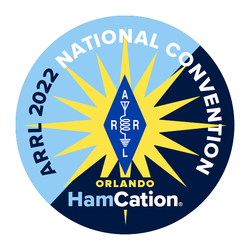
.jpg)
.jpg)

.jpg) The latest episode of the On the Air podcast (Episode 23) features an in-depth discussion of Q-Signals, along with several on-the-air examples.
The latest episode of the On the Air podcast (Episode 23) features an in-depth discussion of Q-Signals, along with several on-the-air examples..jpg) developments in chlorine battery technology, and a chat with ARRL Central Division Director Carl Luetzelschwab, K9LA, about the 1921 Transatlantic Tests.
developments in chlorine battery technology, and a chat with ARRL Central Division Director Carl Luetzelschwab, K9LA, about the 1921 Transatlantic Tests..png) the hills of Lincoln, California. At least 425 riders participated in this year's event, with 230 of them on the 100-kilometer route. The mayor of Lincoln participated in the 50-kilometer ride. This was the 14th year that WPARC volunteers have supported the event.
the hills of Lincoln, California. At least 425 riders participated in this year's event, with 230 of them on the 100-kilometer route. The mayor of Lincoln participated in the 50-kilometer ride. This was the 14th year that WPARC volunteers have supported the event.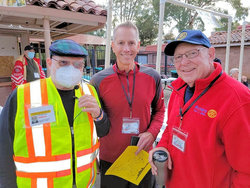
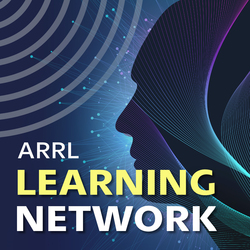 Visit the
Visit the 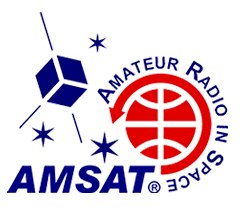 AMSAT is looking for volunteers. Keeping amateur radio in space is a team effort, and volunteers carry out all of the work. AMSAT seeks individuals having a wide range of technical and non-technical skills. Openings include Vice President of User Services, Secretary, Volunteer Coordinator, and Public Information Officer. Submit a resume and cover letter to Paul Stoetzer, N8HM, or
AMSAT is looking for volunteers. Keeping amateur radio in space is a team effort, and volunteers carry out all of the work. AMSAT seeks individuals having a wide range of technical and non-technical skills. Openings include Vice President of User Services, Secretary, Volunteer Coordinator, and Public Information Officer. Submit a resume and cover letter to Paul Stoetzer, N8HM, or 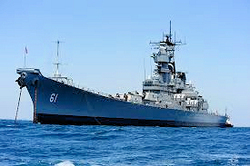 With authorization from the US Navy's 3rd Fleet Spectrum Manager, the Battleship Iowa Amateur Radio Association (
With authorization from the US Navy's 3rd Fleet Spectrum Manager, the Battleship Iowa Amateur Radio Association (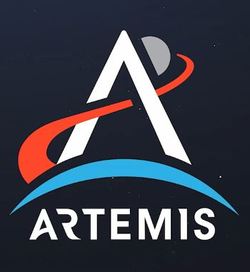 select the AREx proposal, ARISS-USA Executive Director Frank Bauer, KA3HDO, found a silver lining in the whole process. Bauer said the AREx team "learned a great deal in the development of the proposal" and was able to significantly refine its lunar payload design into a concept that can now meet
select the AREx proposal, ARISS-USA Executive Director Frank Bauer, KA3HDO, found a silver lining in the whole process. Bauer said the AREx team "learned a great deal in the development of the proposal" and was able to significantly refine its lunar payload design into a concept that can now meet .jpg)
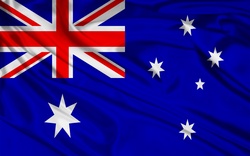 Australian hams show high interest in new 2 × 1 contest call signs. The Australian Communications and Media Authority (
Australian hams show high interest in new 2 × 1 contest call signs. The Australian Communications and Media Authority (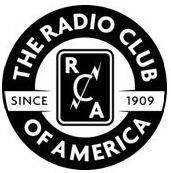 The Radio Club of America (RCA) has shifted the 2021
The Radio Club of America (RCA) has shifted the 2021 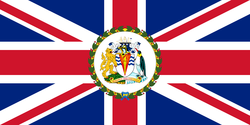 A
A 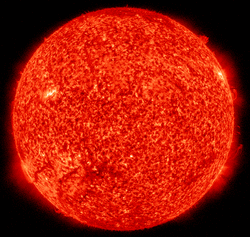 middle latitude numbers went from 11.7 to 4.9. Middle latitude A index daily average went all the way down to zero on November 13.
middle latitude numbers went from 11.7 to 4.9. Middle latitude A index daily average went all the way down to zero on November 13.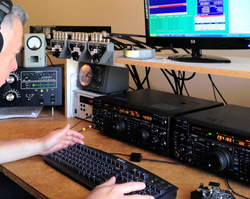 November 24 -- SKCC Sprint (CW)
November 24 -- SKCC Sprint (CW)







